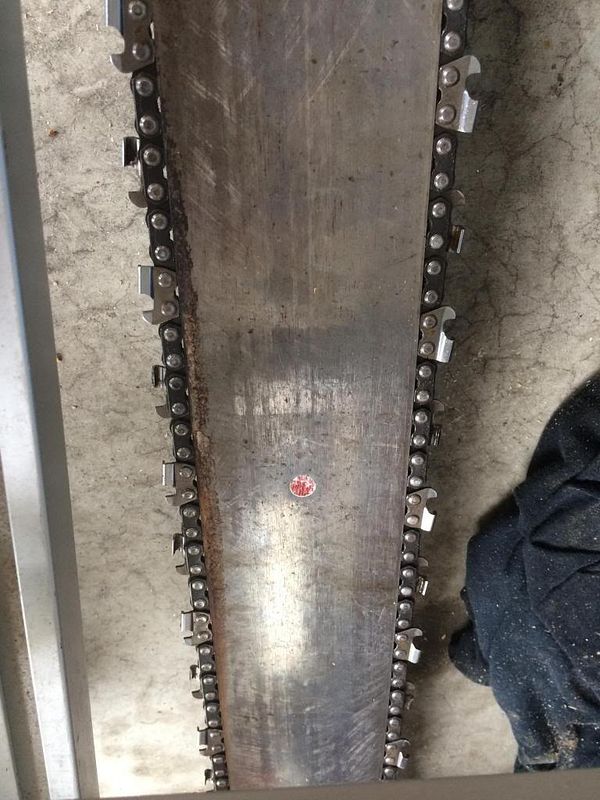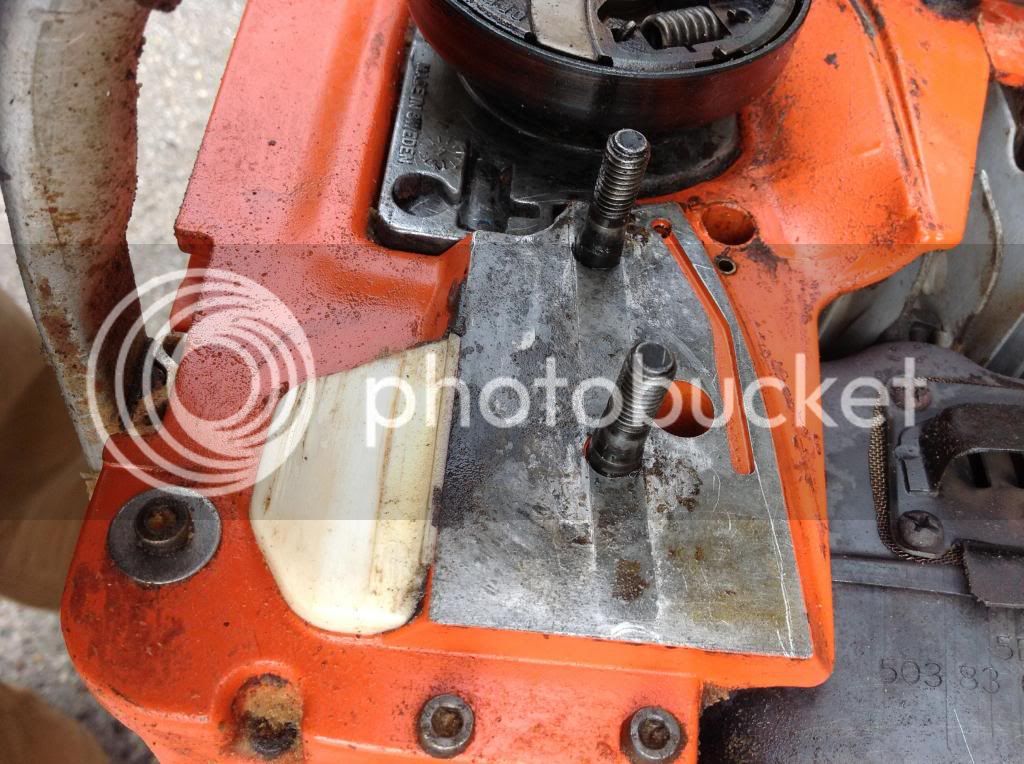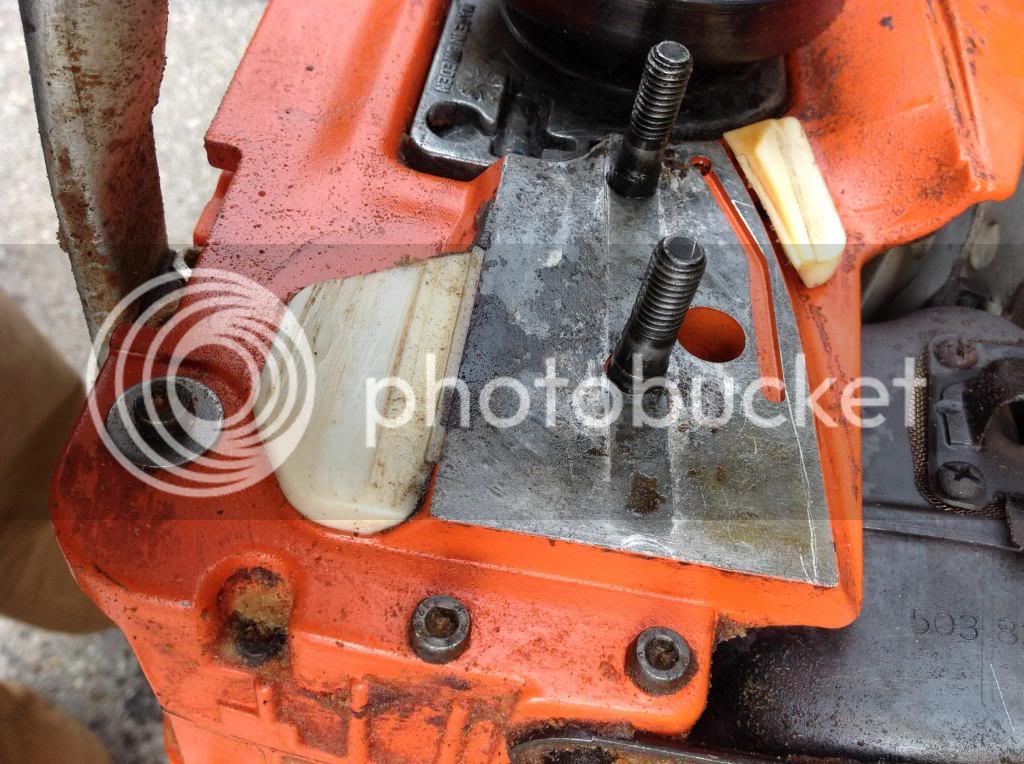Daninvan
ArboristSite Operative
Off to the city log dump down at the beach this morning. I had scoped out some cherry and a Port Orford cedar log the other day. Turns out someone else had their eyes on the cherry as well and had put their mark over my mark. That's not playing nice! The guy who runs the loader is on my side, so it turned out to be no problem. I picked a Port Orford cedar log and a small cherry log.
It was a gorgeous morning, too bad none of my milling buddies were able to join me. I got all the great weather and all the wood for myself!

People sometimes wonder how I can tell what kind of wood a log is when it is sitting in a big pile with nothing but the bark and the end-grain to look at.
Big pile of logs - what is what?
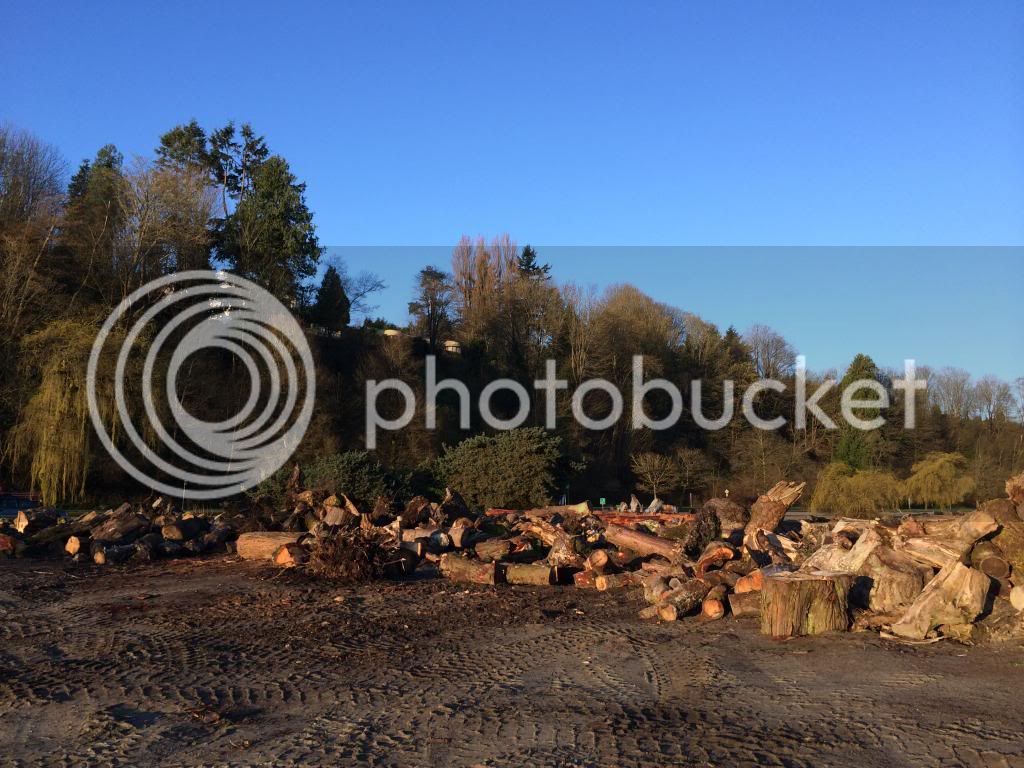
In reality, I can't tell for the most part. But I can tell the ones that I am interested in, mostly from the bark. Often times the smell is a big clue as well. In the photo below, the log on the left is Port Orford cedar, which I can identify through the bark being rougher than the other cedars I might see here (red and Monterey and if I am lucky yellow), and the one on the right is cherry which I can identify by sight. In this case the cherry had some rot in the middle so I left it and milled up a different one. Sometimes I confuse cherry and birch when looking at the bark, but the end grain often tells the difference, cherry being much darker and having a sweet fragrance.
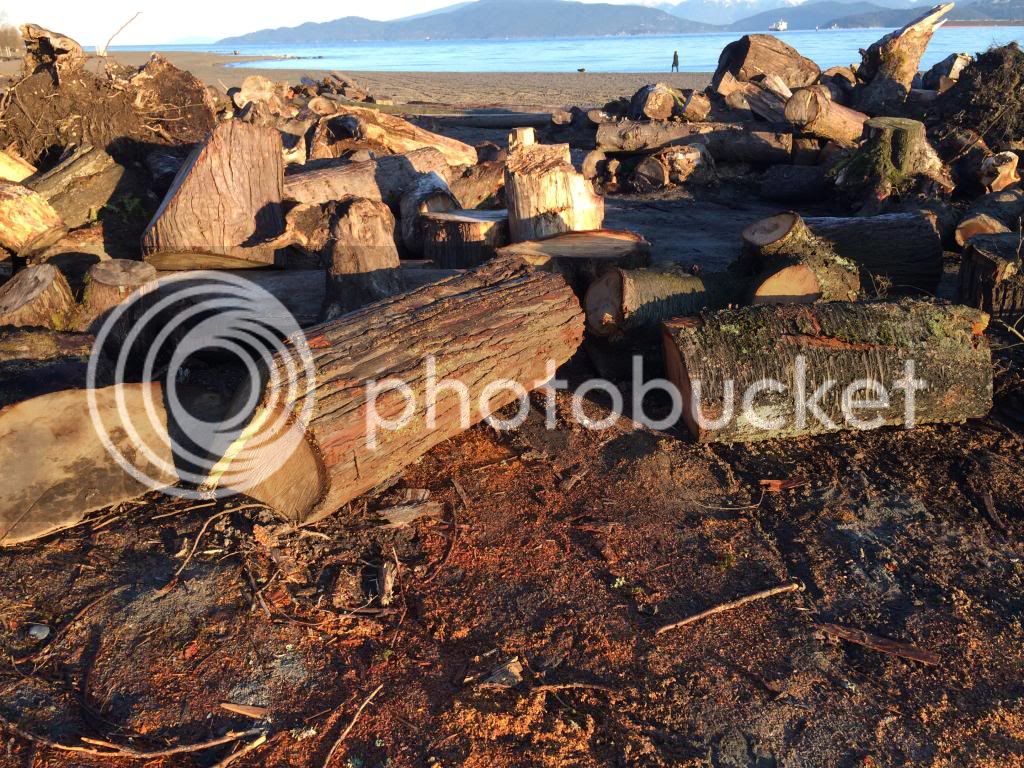
This is an end shot of the PO cedar. Normally I wouldn't touch a log with the pith offset like this with a 10 foot pole. However, this is going to wind up most likely as veneer, so reaction wood does not matter. I milled it in this orientation, but I realized part way through that if I rotated it 90 degrees I might have gotten more quartersawn material. This log is a bit of a puzzle to me, it was way too big to be a branch, so I don't know why the tree would be so straight, but have such an offset pith.
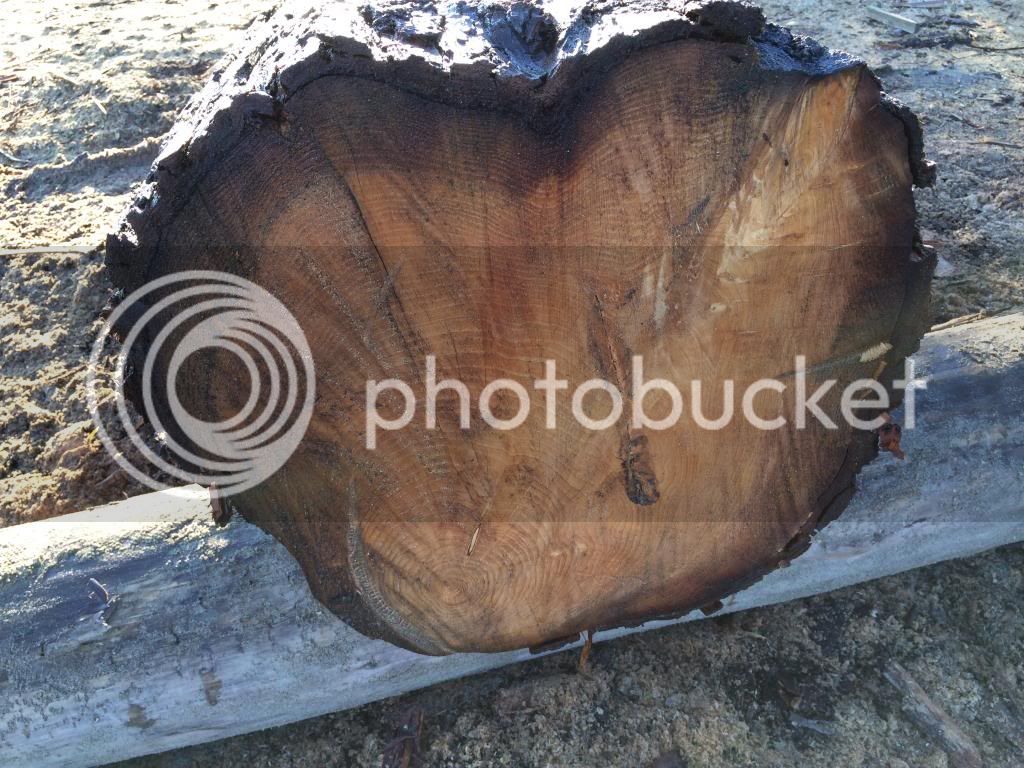
The city worker who runs the loader is unbelievably accommodating. He dipped both the logs in the water for me since they had quite a bit of sand on them from sitting on the beach for a while! He also sets them up on an angle for me so I can mill downhill. Definitely owe him a case of beer or three.
PO Cedar.
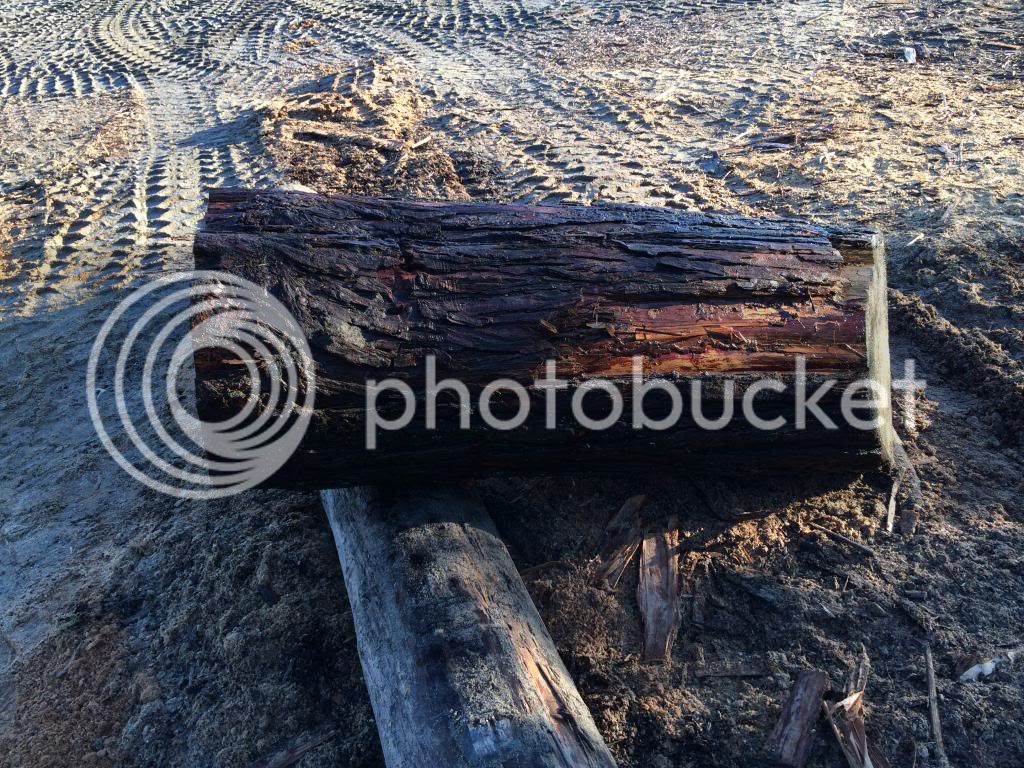
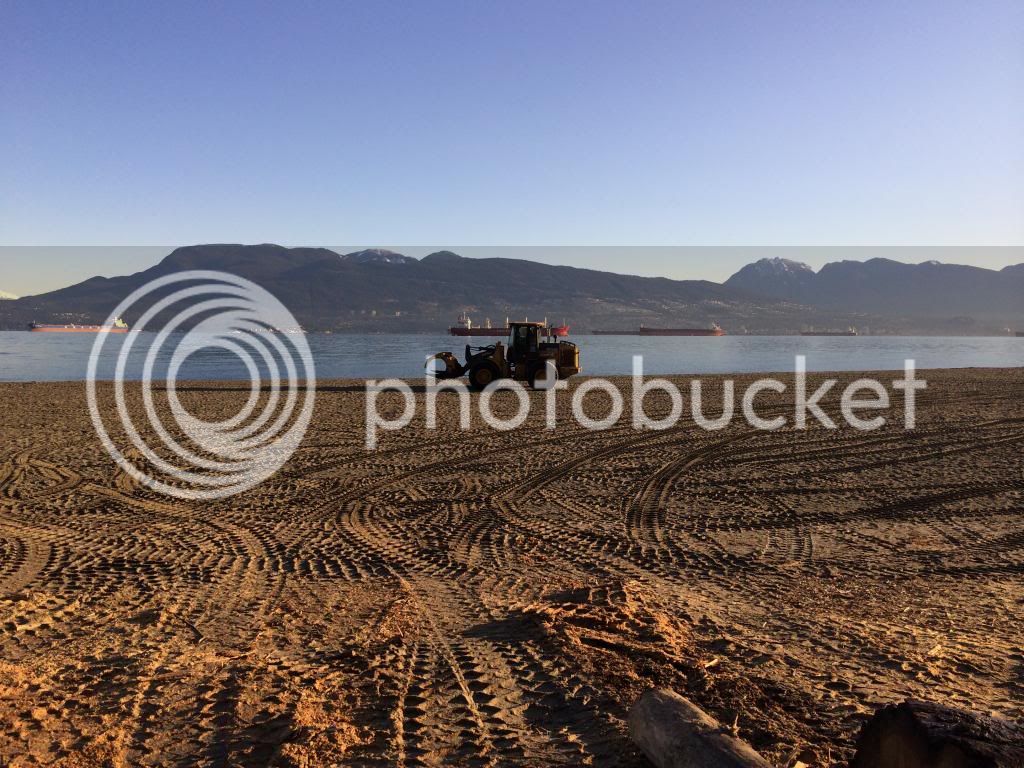
Once the logs are set up the first thing I do is peel off the bark to get any remaining sand off. I also like to take a cookie off each end to get rid of any cracks that may have formed, as well as any sand embedded in the end grain. I don't always take a cookie off, sometimes I am just too eager to get milling! Today I did on both logs, here is the cedar again.
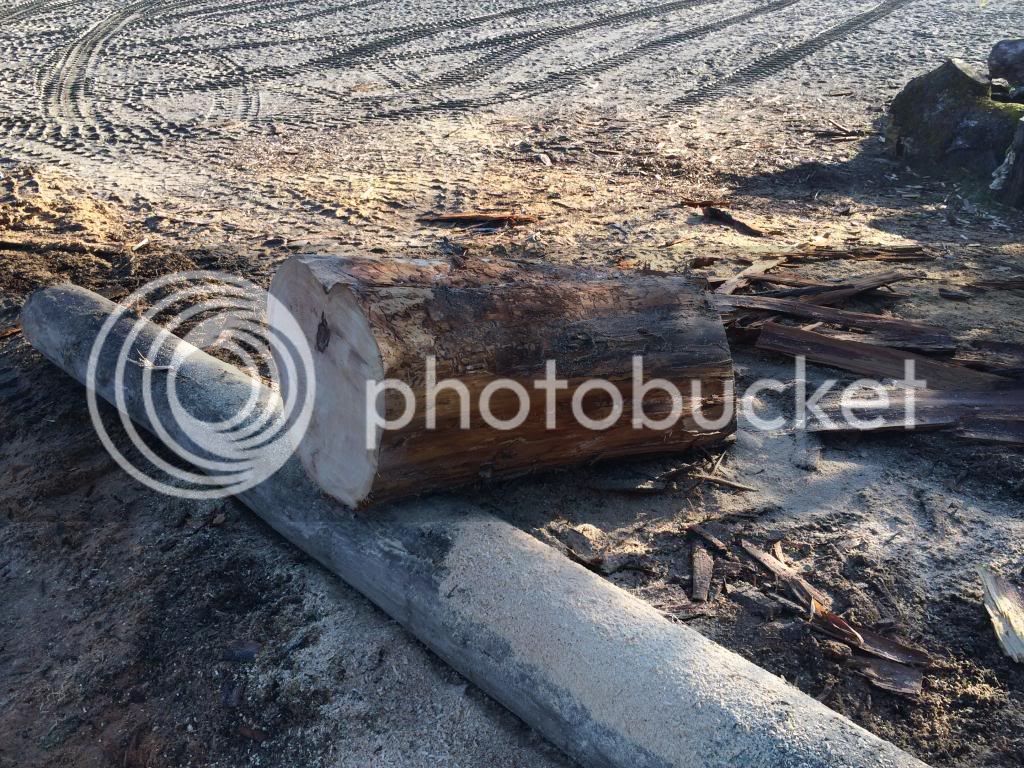
I know a lot of guys like to use ladders and U channel and a bunch of different things to guide their first cut. Me, I nail on a 2x8. This is on the cherry.
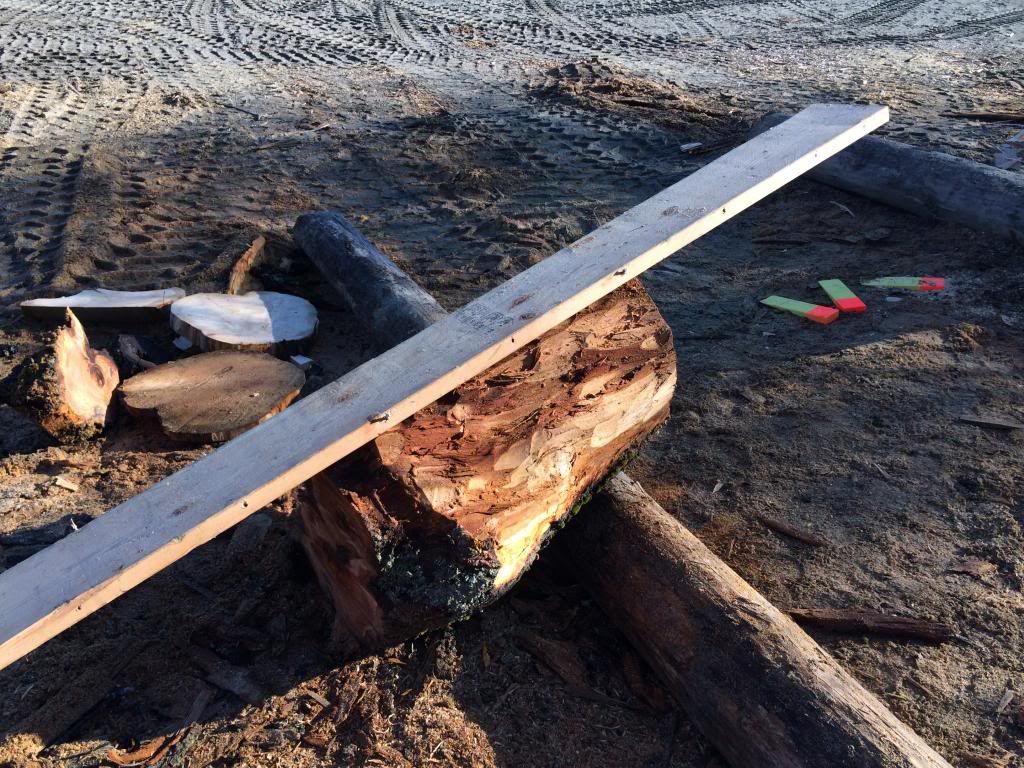
Since I only took one mill with me today, I planned to do the first cut on both logs at about 6". Then I would adjust the mill to a 2 1/2" cut (my preferred thickness) and go to town! Here I am stopped in the cedar's first cut.
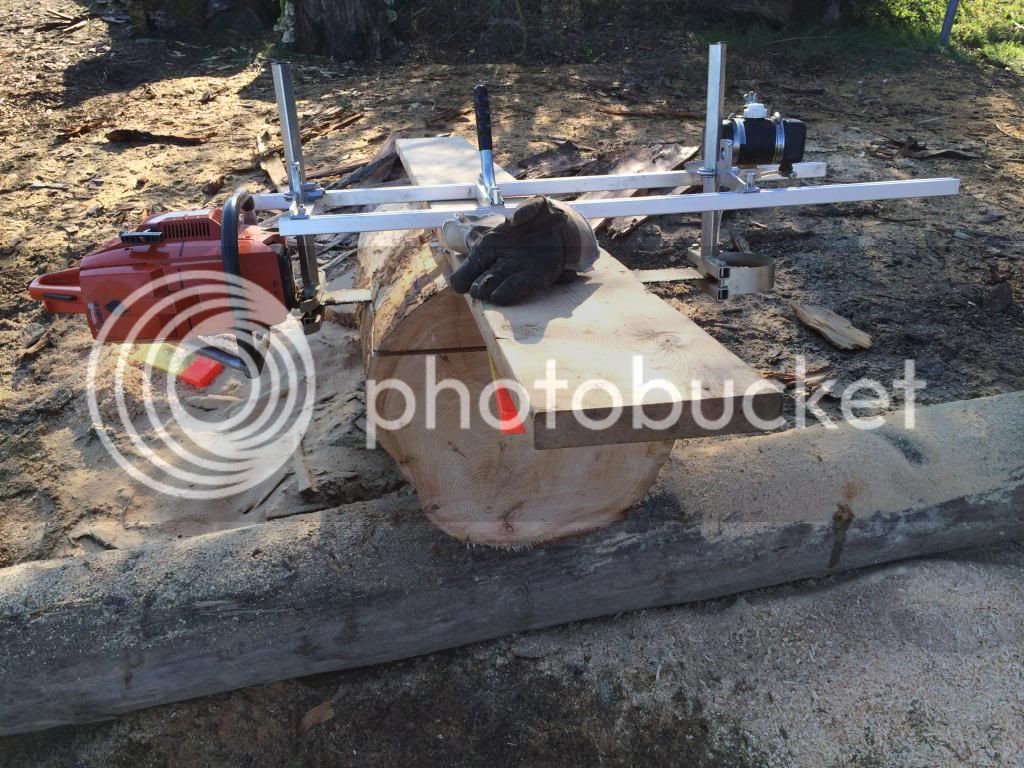
Then about 30 seconds after I took this photo I hit something bad in the log. Teeth were insta-dull. So I took the mill out, sharpened the teeth, and clever guy that I am, came in from the other side figuring I could get right to whatever it was. Sawing uphill was kind of tough, but I got to within about 6" of where the first cut stopped, and again progress halted. So I figured, the log must be loaded with metal. I got out my crosscutting saw and cut off the two portions of the piece that I had milled, then took an axe and chopped out the rest. Guess what - no metal in the log! Whuuut?
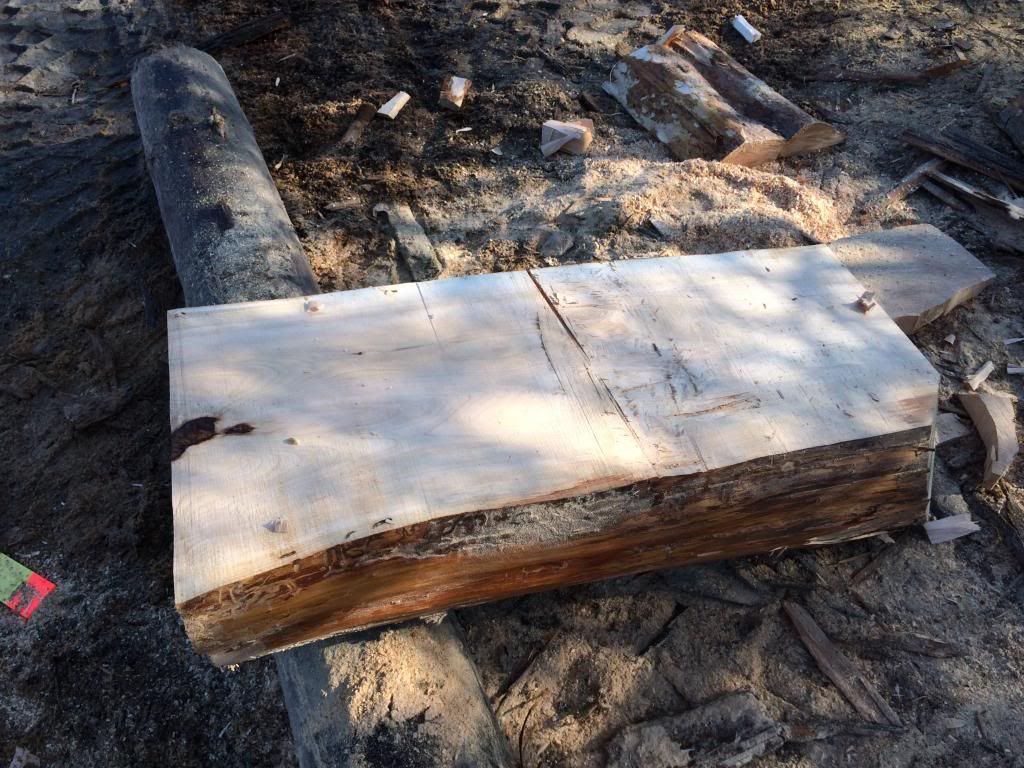
Hmmm. so I sharpened the saw up again, and started in on the cherry. Same thing, progress died after about a foot. At this point the little lightbulb in my head flashed on, and I realized that there was a problem with my saw or my mill. So this time I moved the mill over to my crosscutting saw and finished up the cut no problem with it. You can really see the difference in the quality of the cut.
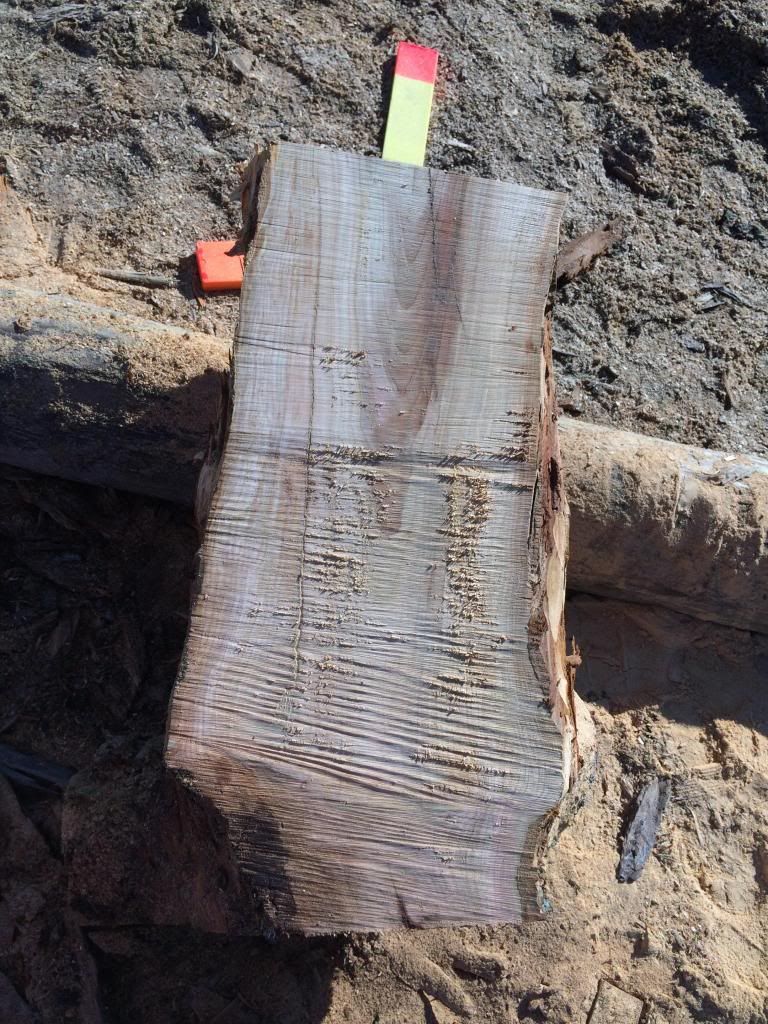
So progress was good from this point. I Cut 5 PO cedar slabs and 4 cherry slabs at 2 1/2" thick. That is my preferred thickness as it can be air dried here in two years, resawn to any thickness, and is also a good thickness for my bowl-turning buddy to turn patters with. I also find that cutting much thinner slabs results in more warping, and is of course more work since you will get more slabs from a given log. While much thicker slabs tend to crack more while drying, and can be too heavy to move around comfortably. This is of course a gross simplification.
The cedar yielded some decent material. I was looking for straight grain, so there was a bit more rustinc stuff here than I would like, but it can be cut out easily enough.
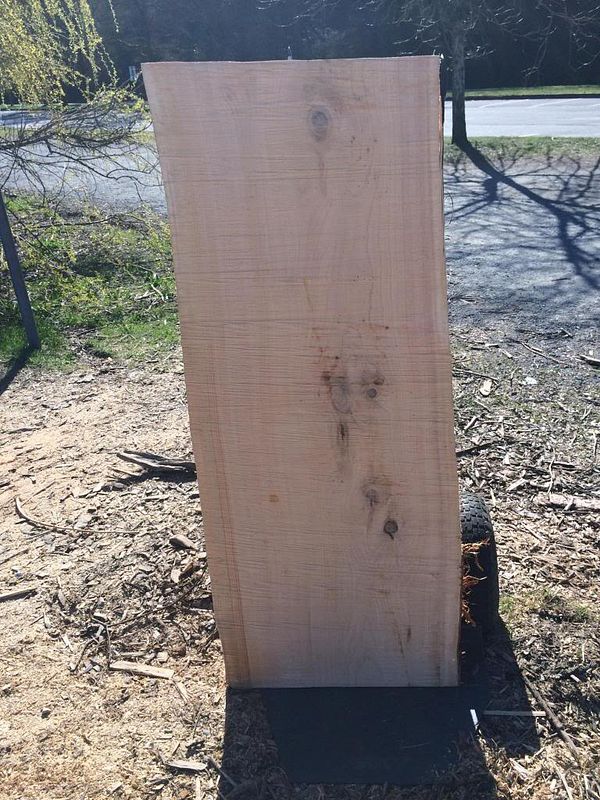
The cherry was pretty crappy as it had a number of deep cracks. The only reason I persisted with it was that it was a flowering cherry and I was able to get the graft union. You can see the difference in the two woods pretty clearly.
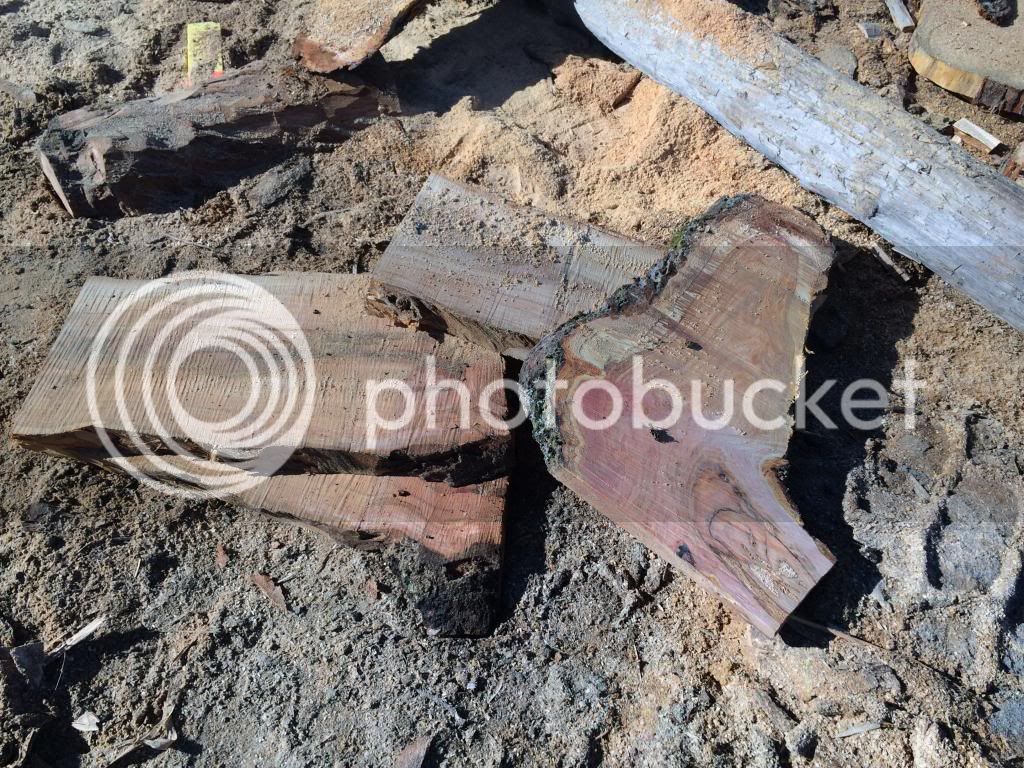
So here they all are loaded up into the mighty Subaru. I am getting smart, I use a liner now since my wife expects me to clean the car before I return it to her!
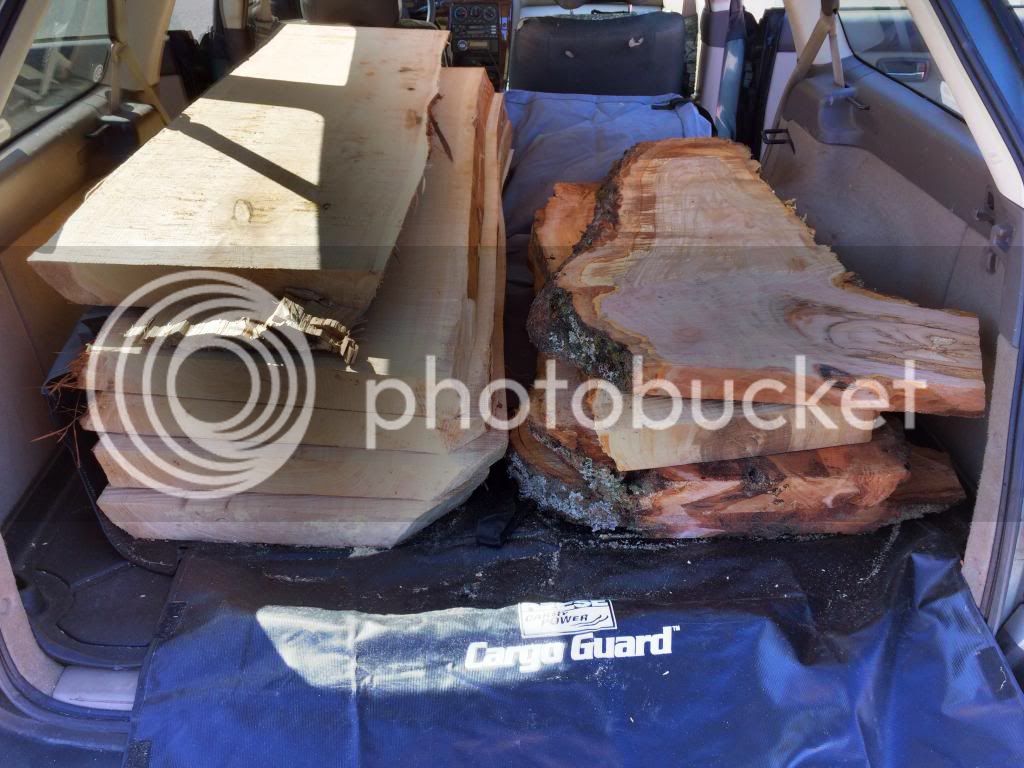
I think it might have been one of the nicest days milling ever, weather-wise. Equipment wise though,k it was one of the worst. I wound up sharpening 5 times, have a bum saw I need to diagnose, and seemed to spend half the time fiddling with one thing or another.
It was a gorgeous morning, too bad none of my milling buddies were able to join me. I got all the great weather and all the wood for myself!

People sometimes wonder how I can tell what kind of wood a log is when it is sitting in a big pile with nothing but the bark and the end-grain to look at.
Big pile of logs - what is what?

In reality, I can't tell for the most part. But I can tell the ones that I am interested in, mostly from the bark. Often times the smell is a big clue as well. In the photo below, the log on the left is Port Orford cedar, which I can identify through the bark being rougher than the other cedars I might see here (red and Monterey and if I am lucky yellow), and the one on the right is cherry which I can identify by sight. In this case the cherry had some rot in the middle so I left it and milled up a different one. Sometimes I confuse cherry and birch when looking at the bark, but the end grain often tells the difference, cherry being much darker and having a sweet fragrance.

This is an end shot of the PO cedar. Normally I wouldn't touch a log with the pith offset like this with a 10 foot pole. However, this is going to wind up most likely as veneer, so reaction wood does not matter. I milled it in this orientation, but I realized part way through that if I rotated it 90 degrees I might have gotten more quartersawn material. This log is a bit of a puzzle to me, it was way too big to be a branch, so I don't know why the tree would be so straight, but have such an offset pith.

The city worker who runs the loader is unbelievably accommodating. He dipped both the logs in the water for me since they had quite a bit of sand on them from sitting on the beach for a while! He also sets them up on an angle for me so I can mill downhill. Definitely owe him a case of beer or three.
PO Cedar.


Once the logs are set up the first thing I do is peel off the bark to get any remaining sand off. I also like to take a cookie off each end to get rid of any cracks that may have formed, as well as any sand embedded in the end grain. I don't always take a cookie off, sometimes I am just too eager to get milling! Today I did on both logs, here is the cedar again.

I know a lot of guys like to use ladders and U channel and a bunch of different things to guide their first cut. Me, I nail on a 2x8. This is on the cherry.

Since I only took one mill with me today, I planned to do the first cut on both logs at about 6". Then I would adjust the mill to a 2 1/2" cut (my preferred thickness) and go to town! Here I am stopped in the cedar's first cut.

Then about 30 seconds after I took this photo I hit something bad in the log. Teeth were insta-dull. So I took the mill out, sharpened the teeth, and clever guy that I am, came in from the other side figuring I could get right to whatever it was. Sawing uphill was kind of tough, but I got to within about 6" of where the first cut stopped, and again progress halted. So I figured, the log must be loaded with metal. I got out my crosscutting saw and cut off the two portions of the piece that I had milled, then took an axe and chopped out the rest. Guess what - no metal in the log! Whuuut?

Hmmm. so I sharpened the saw up again, and started in on the cherry. Same thing, progress died after about a foot. At this point the little lightbulb in my head flashed on, and I realized that there was a problem with my saw or my mill. So this time I moved the mill over to my crosscutting saw and finished up the cut no problem with it. You can really see the difference in the quality of the cut.

So progress was good from this point. I Cut 5 PO cedar slabs and 4 cherry slabs at 2 1/2" thick. That is my preferred thickness as it can be air dried here in two years, resawn to any thickness, and is also a good thickness for my bowl-turning buddy to turn patters with. I also find that cutting much thinner slabs results in more warping, and is of course more work since you will get more slabs from a given log. While much thicker slabs tend to crack more while drying, and can be too heavy to move around comfortably. This is of course a gross simplification.
The cedar yielded some decent material. I was looking for straight grain, so there was a bit more rustinc stuff here than I would like, but it can be cut out easily enough.

The cherry was pretty crappy as it had a number of deep cracks. The only reason I persisted with it was that it was a flowering cherry and I was able to get the graft union. You can see the difference in the two woods pretty clearly.

So here they all are loaded up into the mighty Subaru. I am getting smart, I use a liner now since my wife expects me to clean the car before I return it to her!

I think it might have been one of the nicest days milling ever, weather-wise. Equipment wise though,k it was one of the worst. I wound up sharpening 5 times, have a bum saw I need to diagnose, and seemed to spend half the time fiddling with one thing or another.






